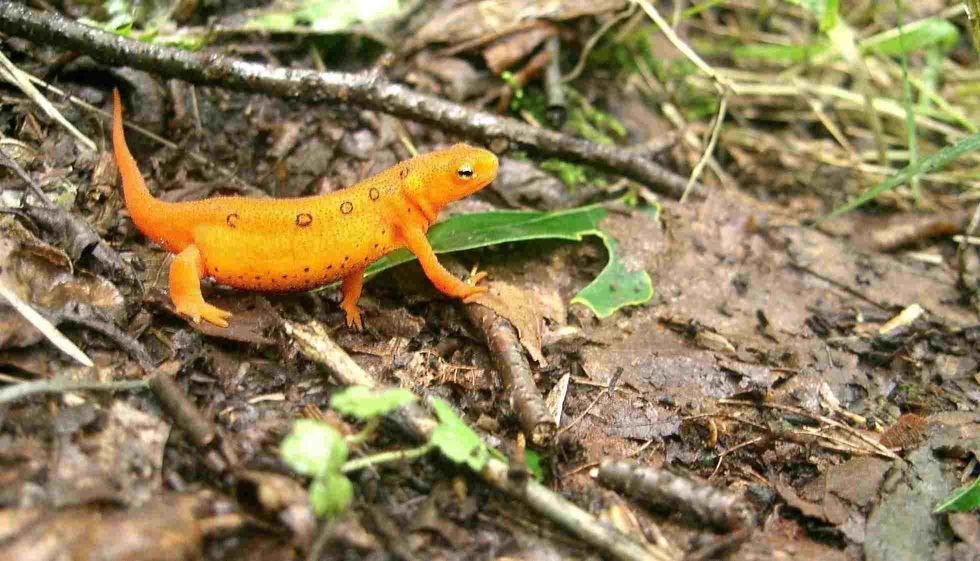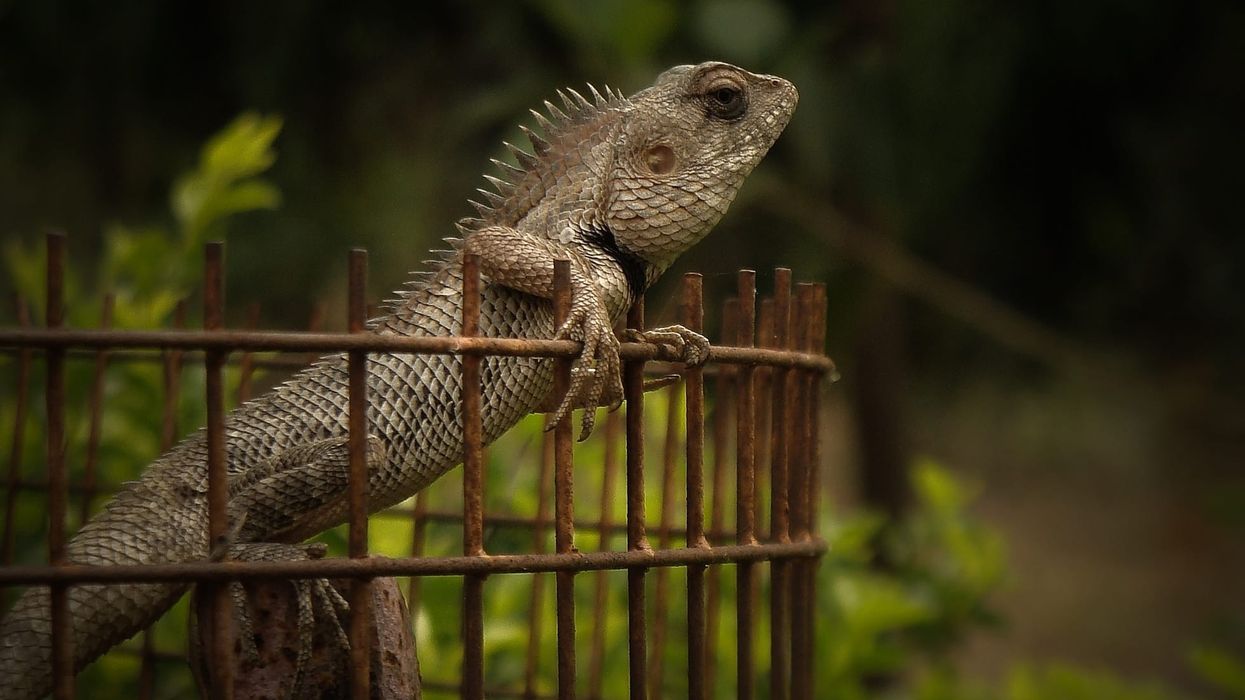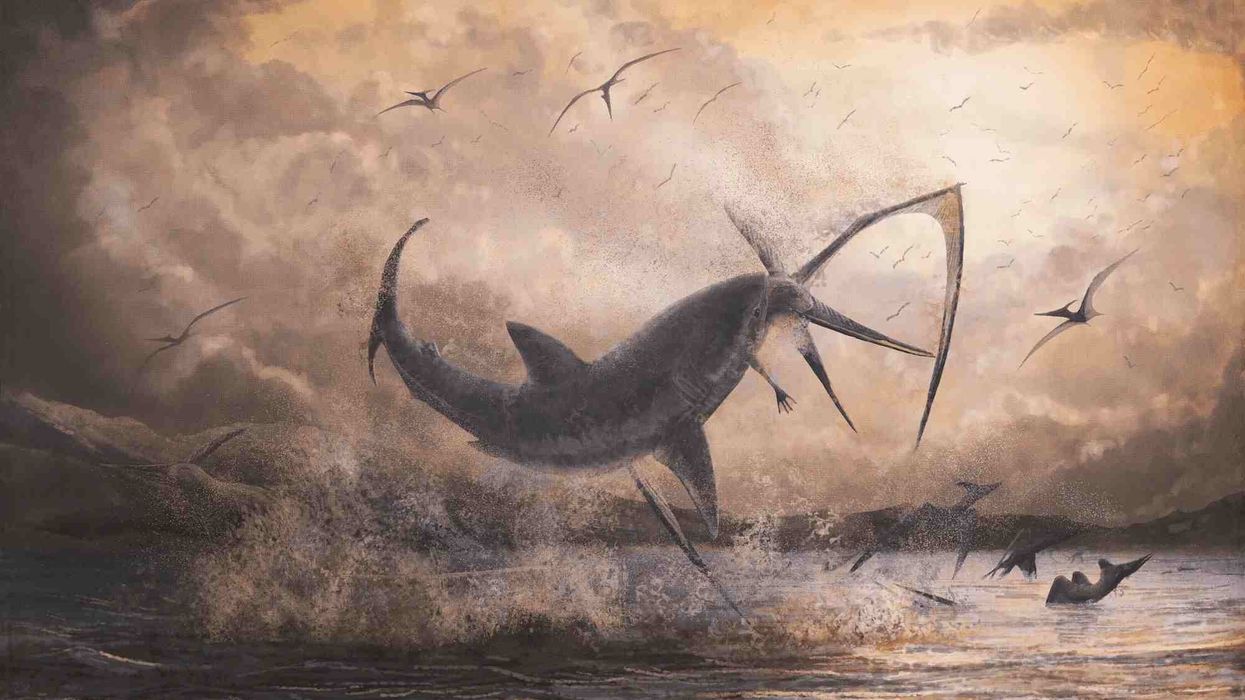The Eastern newt is one of the few species of amphibians that have their origin in North America. The Eastern newt comprises mainly of four sub-species of newts. They are the Peninsula newt, the Central newts, the Broken-striped newt, and Red-spotted newts.
Some sources often blend the Eastern newt with the subspecies newt N. v. viridescens. The adults and the juvenile can be easily distinguished in the case of this species. Eastern newts are ectothermic animals that undergo metamorphosis.
These newts have bilateral symmetry. These are oviparous amphibians and fertilization is internal. These newts are the second most abundant in number amongst the salamander species in the United States.
Like reading about these colorful amphibians? Want to know more? Let's move on!
If you like reading about this, you may also like reading about the great crested newt and common newt.
Eastern Newt Interesting Facts
What type of animal is an Eastern newt?
An Eastern newt is a newt belonging to phylum Chordata, subphylum Vertebrata, order Urodela, genera-Notophthalmus, and species viridescens.
What class of animal does an Eastern newt belong to?
Eastern Newts belong to the class Amphibia, that is, they are amphibians.
How many Eastern newts are there in the world?
The Eastern newts are found in considerable numbers in the world.
Where does an Eastern newt live?
The spotted newt N. v is found in terrestrial, temperate, and freshwater habitats. The Eastern newt is found in coniferous forests, lakeshores (like around the great lakes), deciduous forests, woodland habitats, wetlands, and mud bottoms.
What is an Eastern newt's habitat?
Eastern newts are found throughout Eastern North America. They are found from Canadian maritime provinces to the Great Lakes to Florida. In Florida, the peninsula newt has been seen. The broken striped newt is found in the coastal regions of North Carolina and South Carolina. The N. v viridescens are found all over New Hampshire.
Who do Eastern newts live with?
Newts are solitary animals.
How long does an Eastern newt live?
The average lifespan of Eastern newts is about 10-15 years.
How do they reproduce?
The breeding season begins depending on the latitude. The seasonal breeding begins for the adult male and female from late winter to early spring. Females are courted by males through tail movements and wiggles.
Males also compete with one another. Males also emit pheromones to attract females. Males deposit their sperm packets at the bottom of the lakes or ponds.
The packets of the male are picked up by the female and fertilization takes place. It is followed by the laying of eggs by the female. A female takes up to a week to lay all her eggs.
There are 200-300 jelly-covered eggs per clutch. Sometimes a female may also lay 400 jelly-covered eggs in one clutch. The eggs attach to something that is available underwater in the water bodies.
There is no parental care by the male or the female for the larvae. Many eggs are lost due to predation. The incubation period is three to eight weeks.
The larvae slowly evolve in size to become an eft. Efts survive on land for two to three years. The newts may have multiple mates in one life, that is, they are not monogamous.
What is their conservation status?
According to the International Union for Conservation of Nature (IUCN) Red List, the Eastern newt, Notophthalmus viridescens is classified as an animal of Least Concern.
Eastern Newt Fun Facts
What do Eastern newts look like?
Red efts are brilliantly colored and are impossible to miss when they walk in the forest litter! The Eastern newt displays different shades of color throughout its life stage. The larvae of the newts have a yellowish-brown skin tone.
They have gills as they live in water. They have tails that are flat in a lateral way. In the next stage, that is the eft stage, the skin is reddish-brown.
The tail in this stage is not flat but round. This stage has moist skin instead of gills. The adult newts are brown or olive-green or yellowish-brown in color with a belly yellowish in color that is filled with red spots bordered with black. They are longer and have small eyes.
In the red eft stage, the red-spotted newt has prominent red-orange spots with black borders. Sometimes the adult newt has rough skin. There is ornamentation in sexual dimorphism.
How cute are they?
Eastern newts are good to look at. However, the adult newt is not that cute!
How do they communicate?
Eastern newts communicate through visual and chemical cues. Communication channels are visual, tactile, and chemical. The perception channels are also visual, tactile, and chemical. They also communicate through touch.
How big is an Eastern newt?
The Eastern newt (Notophthalmus viridescens) is 2.5-5.5 in (6.5-14 cm) in length. The larvae are smaller than the adults.
How fast can an Eastern newt run?
Eastern newts are fast in water. They are comparatively slower on land.
How much does an Eastern newt weigh?
The weight of an Eastern Newt is 0.2-0.4 oz (5-11 g).
What are the male and female names of the species?
The adult male and the adult female of the species do not have separate names as such.
What would you call a baby Eastern newt?
A juvenile Eastern newt is called an eft or red eft due to its bright color and a newborn is called a larva.
What do they eat?
The newt at all stages of its life is a carnivore. They may also be termed insectivores. Eastern newts feed on aquatic insects, small invertebrates, eggs of amphibians, aquatic larvae, aquatic crustaceans, mollusks, worms, zooplankton, and non-insect arthropods. The efts feed on springtails. They also feed on midge larva.
Are they poisonous?
Eastern newts have toxic skins. However, the toxin has not been found to be harmful to humans. But it is not advisable to consume these newts.
Would they make a good pet?
Sometimes, they are kept as pets in aquariums or terrariums. They are helpful to humans cause they help in controlling insect populations. They also help in controlling mosquito populations as they feed on mosquitoes. They have a commercial value in the pet trade.
Did you know...
These newts are diurnal, that is, they are active in the day. However, the eft is nocturnal. Efts are very active on rainy nights.
The Eastern newt has toxic skin secretions at all stages of the life cycle. However, the toxin is the most potentially damaging in the juvenile eft stage. It is particularly lethal for small predators like mice.
The red color forewarns animals looking to prey on the juvenile eft that the little amphibian has poison. The little juvenile eft's body produces a neurotoxin called tetrodotoxin. It renders the predators powerless for a few moments giving enough chance to the little one to escape.
The potential predators of the newts include birds, fish, and other amphibians. However, most forest dwellers steer clear of the amphibian.
Red efts hibernate under mossy logs during dry winters to keep the skin moist.
They breed once a year. Males and females sexually mature around 2000 days from birth.
The three stages in the life cycle are not always for every newt. Some may transform from larvae into adults directly. However, the adults, in this case, have some larval features. It is called a neotenic adult.
The red eft stage lasts from two to seven years for an Eastern newt. The broken striped newt n v has stripes instead of spots in the red eft stage.
These amphibians are susceptible to a dangerous pathogen called the Bactrachochytrium salamandrivorans (Bsal). This pathogen has caused problems in the species found in Europe. Scientists are concerned for the United States population as well.
These creatures are incredible in terms of mobility and can turn into super-spreaders of the disease all throughout North America. Eastern newts can end up infecting other populations of the same family. The striped newt, N. v. dorsalis, has reddish-brown skin in the red eft stage.
There is a similarity between newts and salamanders as both of these have three stages in their life cycles. All newts, including the red-spotted newt, are salamanders but all salamanders are not newts.
The central newt, N. v. louisianensis, has no stripes or spots in the red eft stage.
Can you touch an Eastern newt?
An Eastern newt can be touched. However, they should be handled with care and not be touched with broken skin. This is because their skin secretions are toxic.
Do Eastern newts need land?
The eft stage requires land. The juvenile stage in the life cycle of a newt is mainly terrestrial. They live among leaf litter and forest litter. The aquatic larvae and the adults on the other hand mainly live in water ponds.
For breeding, the red eft will return to ponds. They are great at accepting changing habitat situations and can colonize new regions readily. If the space in the aquatic body is not enough the aquatic adult can transform readily into a land dweller, such is the adapting ability!
Here at Kidadl, we have carefully created lots of interesting family-friendly animal facts for everyone to discover! For more relatable content, check out these desert rain frog facts and emperor newt facts pages.
You can even occupy yourself at home by coloring in one of our free printable eastern newt coloring pages.










